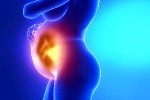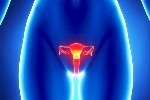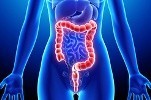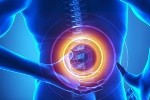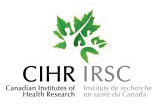Background
The lumbosacral radicular syndrome (LRS), also called sciatica, is a disorder with radiating pain in one or more lumbar or sacral dermatomes, and can be accompanied by phenomena associated with nerve root tension or neurological deficits [26, 27, 34, 43]. A prolapsed disc mostly causes LRS, but other causes include spinal or lateral recess stenosis, tumours or radiculitis [13, 34].
The incidence of LRS in general practice in the Netherlands is estimated between 60,000 and 75,000 a year [13]. Most patients with LRS are treated conservatively in the first 6–12 weeks (acute and subacute phase) [34]. However, the effectiveness of most of the conservative interventions has not yet been demonstrated beyond doubt.
The review of Vroomen et al. [40] about conservative treatment of sciatica showed the lacking of evidence either for or against the efficacy of traction, exercise therapy or drug therapy for the management of LRS.
They reported that epidural steroids might be beneficial for subgroups of nerve root compression. Vroomen et al. searched literature between 1966 and March 1998. Several new RCTs have been published since, so an updated review on the whole spectrum of conservative management in LRS seems to be indicated. Also, recent developments in the methodology of systematic reviews are included in the present review and finally more specific physical therapy databases were searched.
Methods of Acupunctur
The two main approaches to acupuncture practiced in the West are the Traditional-based on traditional Chinese theories of ‘energy-balancing’—and the Western Medical—based on western concepts of
anatomy and physiology.
Traditional Chinese acupuncture defines good health as a balance between two opposing polarities (yin and yang). In health, chi (life force, also spelt ‘qi’) is said to flow freely through a system
of channels (meridians), whilst in disease this flow is disrupted causing an imbalance between yin and yang. Needles inserted into specific points along meridians are said to redress imbalances in
the flow of chi and hence treat disease [1].
In contrast, Western Medical acupuncture places emphasis on the concept of trigger points. In the 1930s, Kellgren found that injecting irritants into tender ‘spots’ in muscles could cause specific
patterns of non-dermatomal referral of pain and tenderness (usually distally), which could be abolished by the injection of local anaesthetic into the ‘spot’ [2].
Simons et al. [3] coined the term ‘trigger points’ for these ‘spots’ and developed the idea that activated trigger points were responsible for regional myofascial pain syndromes[3]. They
emphasized ‘four cardinal features [of the syndrome]: a palpable nodular or band-like hardness in the muscle, a highly localized spot of extreme tenderness in the band, reproduction of the patient’s
distant pain complaint by digital pressure on that spot [referred pain], and relief of the pain by massage or injection of the tender spot’.
The histology of a trigger point does not reveal any gross anatomical abnormalities [4] but there is evidence for a localized increase in neural activity; thus insertion of a needle electrode into a
trigger point records spontaneous electrical discharge on EMG [5].
Trigger points can become activated by acute trauma, repetitive microtrauma and postural disorders [4]. Even after the inciting noxious stimulus is removed trigger points can remain active within
taut muscle bands or muscle nodules (‘knots’) [4].
Trigger points can also be activated by emotional stress that can lead to muscles being held in a state of persistent tension [6] with associated increases in cortisol level and symphathetic tone [7]; in this context, acupuncture may be especially beneficial since needling increases the parasympathetic tone as demonstrated by a reduction in both salivary cortisol and in heart rate on tilt table testing [8].
Efficacy of Acupuncture
For many years clinical research in acupuncture has been of poor methodological quality. Studies have suffered from investigator bias, poor design, inadequate randomization and blinding, and small
patient numbers. Specific problems for acupuncture trials have included the diversity of types of acupuncture, individualized treatments, the use of traditional diagnostic criteria and finding a
credible control (‘sham’) [16].
Control groups have included alternative treatments [transcutaneous electrical nerve stimulation (TENS), physiotherapy, medications] and sham acupuncture, where either needles are inserted into
non-acupuncture points or non-penetrating sham needles are used. The first sham needle was developed in 1998 (the ‘Streitberger’ needle). The blunted tip telescopes back into the handle when tapped
and the needle appears to be inserted but does not actually penetrate the skin [17].
Although this was heralded as a major advance high-quality clinical studies still remain limited. A further issue is whether the randomized controlledtrial (RCT) design is appropriate for
acupuncture studies.
Paterson and Dieppe [18] believe that acupuncture is not just about needling but that non-specific elements such as traditional Chinese diagnostic processes and explanations that would generally be
categorized as placebo in RCTs may be an integral component of actual treatment [18]. The authors conclude that using placebo-controlled trial designs for acupuncture may lead to false-negative
results.
The majority of randomized clinical studies in musculoskeletal pain have found acupuncture to be superior to no treatment whilst those that have compared acupuncture with sham tend to show
statistically significant benefits in short-term analyses (< 3 months). The evidence for musculoskeletal acupuncture is summarized subsequently. Most of the clinical studies within the cited
reviews have been meridian based with use of traditional acupuncture points located locally and distally along the meridians.
Treatment of Acupuncture for Lower Back Pain (Lumbar Radicular Syndrome)
In 2005 Cochrane reviewed 35 RCTs on adults with mechanical low back pain [25]. A total of 1718 patients had chronic pain (> 12 weeks duration). Acupuncture led to improvement of subjective
pain scores by 32% compared with 6% with no treatment and 23% with sham acupuncture in outcome measures of pain up to the 3-month time point. The authors concluded that acupuncture has a positive
effect for pain relief compared with no treatment or sham in the short-term.
In the same year, a meta-analysis that included 22 RCTs was published by Manheimer et al. [26]. The authors found that for short-term (< 6 weeks) pain relief of chronic back pain acupuncture was
significantly more effective than sham (SMD 0.54, 95% CI 0.35, 0.73). Trials included in these meta-analyses were heterogeneous with respect to population, acupuncture technique, control groups and
outcome measures.
In the GERAC back pain study [27], 1162 patients with chronic low back pain were randomized. The studies found the effectiveness of acupuncture to be almost twice that of standard therapy with
6-month response rates being 47.6, 44.2 and 27.4% for true acupucture, sham and standard groups, respectively.
Conclusion
Acupuncture research has been fraught with difficulties but evidence is emerging that, at least in short-term analyses, acupuncture can be a useful and relatively safe treatment for
non-inflammatory musculoskeletal pain.
In recent meta-analyses, acupuncture appears to have superiority over control arms. The most likely explanation for the mechanism of therapeutic acupuncture is the phenomenon of neuroplasticity.
Acupuncture is likely to have a placebo effect but whether it has a more specific physiological effect remains unclear. Early work indicates that there are differences between the neural effects
of expectation and acupuncture’s therapeutic analgesia in functional studies in experimental settings. More work needs to be performed to explore these differences and this could lead to novel
treatments to maximize the therapeutic benefits of acupuncture.
Contact Us
Chalmers Medical Building
328 Hwy 7 East Suite 201,
Richmond Hill ON L4B 3P7
Tel: 416 399-3888
E-mail: info@aahclinic.com
Conditions Treated
Effective Herbal Therapy for Inflammatory Bowel Disease
NO Surgery!
Carolyn XU Treats Ulcer Colitis Successfully
Considering Therapy?
Resource Links
References
Donation
Great things happen when you put your heart into it.
Click Here to Send us your request
Tips
Questions about your first appointment or if your insurance will cover the cost? Find more information below.


